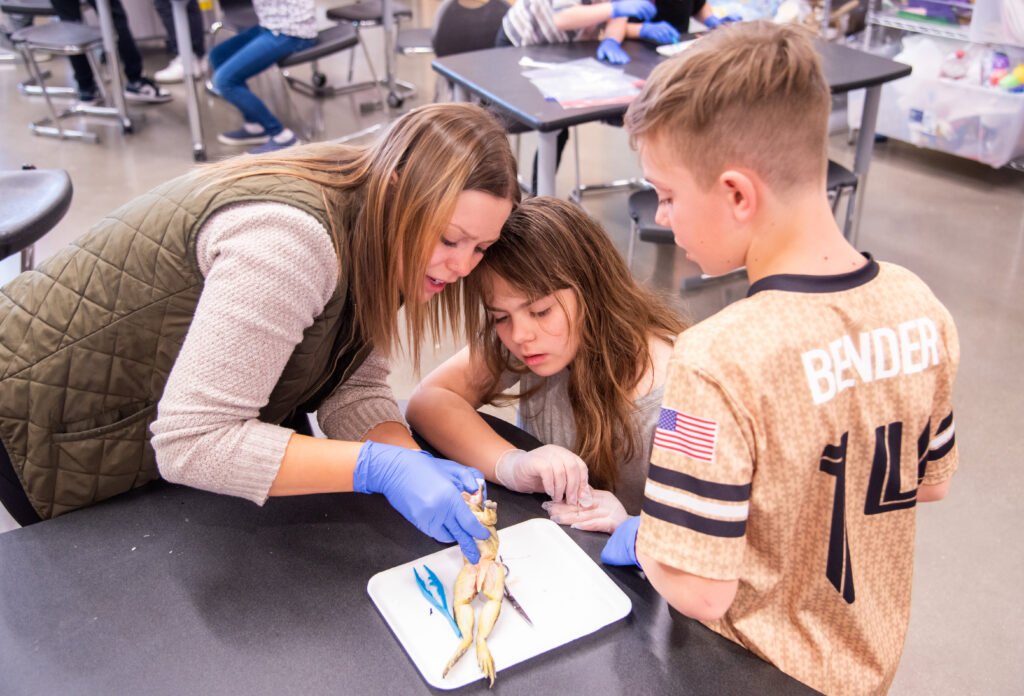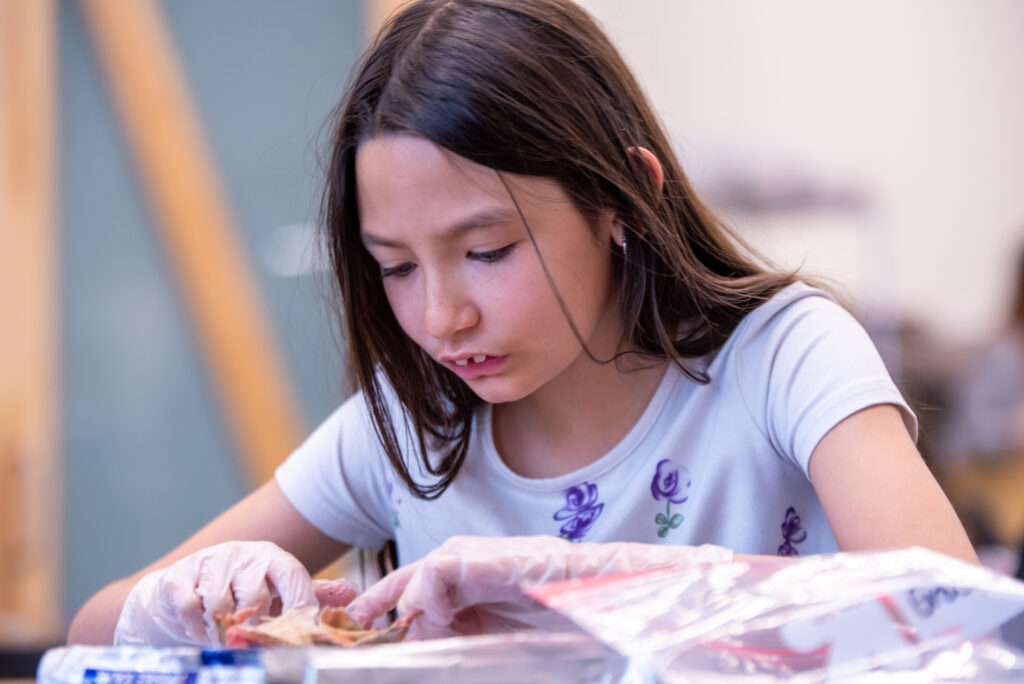
Upon entering the makerspace at Grand View Elementary on a Thursday morning, you can sense the energy and excitement of students eager to participate in the dissection club. Yes, you heard that right, an elementary dissection club! As students begin to learn about the world around them, the dissection club provides an opportunity to study the anatomy of various small animals and insects, and to delve deeper into the wonders of life.
Grand View Elementary’s dissection club launched in March by second-grade teacher Angie Koch and third-grade teacher Tiffany Kalkhorst. Their shared passion for hands-on learning and fostering curiosity in their students led them to start the club.
“As Angie and I were brainstorming ideas around our science club, we thought of so many concepts from life cycles to earth science focusing on plants, and weather patterns,” shared Kalkhorst. “We realized our students already study many of the concepts we had considered throughout their elementary years; dissection came to us at that point. We both remembered being fascinated with life structures as kids, and having those opportunities in middle and high school. Having taught in other grade levels before, we knew how engaged students have been anytime we taught life structures of the human body or of an animal.”
Students in kindergarten and first grade have the opportunity to dissect flowers, while second and third graders will dissect earthworms. For the last three weeks, fourth and fifth grade students have been studying frogs, and learning more about the similarities between the internal systems and organs of frogs and humans, as well as gaining a deeper understanding of the physiology of these fascinating amphibians. During each session, the scientific process is implemented as students are led through different structural parts of the frog’s body and discuss their functions. As they begin moving through the external parts of the body, each student has time to experiment, observe, wonder, analyze, and share their thoughts on how the functions of the body help the species survive.
“For example, as we observed the mouth of the frog, students were provided with a visual of each working part within the mouth. They were able to locate those structures, and discuss how those working pieces move or function to help the frog survive,” shared Koch. “This gives them the opportunity to identify how different parts of the system work together to create a specific function.”

One way that Kalkhorst and Koch are incorporating dissection into the broader science curriculum is by using it as an extension to the learning already happening at each grade level through the Life Science concepts and standards. “In the fourth and fifth grade curriculum for Life Science, two concepts that tie into the Life Science realm are Structures of Life and Living Systems,” shared Kalkhorst. “By dissecting frogs, we are able to look at the structures of the frog’s body and determine how their body functions to help them survive in the real world.”
As kindergarteners and first graders dissect flowers, they investigate and identify the various components of a plant while also recognizing patterns regarding the essential needs of a plant’s survival. Additionally, second and third graders will expand their Life Cycles studies by dissecting earthworms, allowing them to examine individual organisms and understand how the structures’ functions enable life, growth, and behavior.
For Kalkhorst and Koch, their goal for the dissection club is for students to develop critical thinking skills as they analyze and interpret their findings, develop their observations of an animal’s internal and external structures, and draw conclusions about how the working system helps the animal survive. In addition to learning about anatomy and physiology, students learn about scientific methodology. Another learning objective they hope to achieve is for students to construct an argument that animals have internal and external structures that function to support survival, growth, behavior, and reproduction.
“Most importantly, we want our students to have fun exploring and extending their learning beyond the curriculum,” shared Kalkhorst. Through participation in the dissection club, students can gain a deeper appreciation and understanding of the natural world around them, while developing a love for scientific inquiry.

